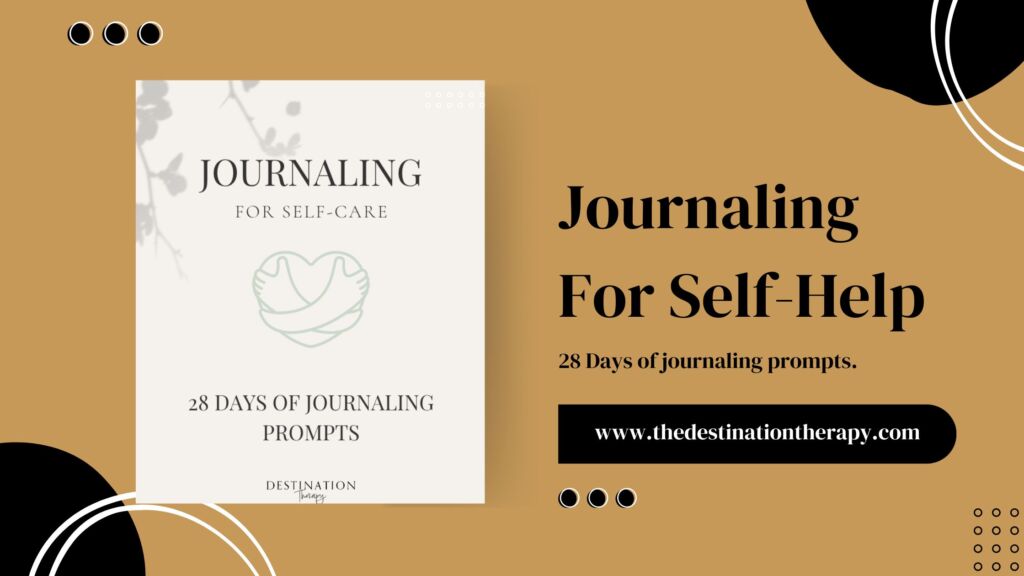Feeling overwhelmed by life’s constant demands? You’re not alone. Many people find themselves caught in a cycle of stress, trying to balance work, family, and personal commitments – often at the cost of their own well-being.
What if you could shift this narrative? Effective time management is more than just ticking off tasks on a to-do list; it’s about reclaiming a sense of control and cultivating calm amid the chaos. By learning to prioritize, organize and approach your schedule with intention, you can create space for the things that nourish and sustain you. Imagine feeling lighter – able to pursue your passions, strengthen connections with loved ones, and rested fully without unfinished tasks weighing on your mind.
This article will explore practical techniques to transform your relationship with time. From setting realistic, achievable goals and breaking down large projects into manageable steps to making peace with saying “no” and using tools like digital calendars effectively, you’ll discover strategies to reduce overwhelm, alleviate stress and find balance.
Table of Contents
A Quick Reminder of What Stress is
Effective time management can significantly reduce stress. A clear understanding of the stress response and its connection to chronic conditions is essential. Stress and anxiety can manifest in physical and mental health issues, impacting daily life and well-being.
The Stress Response
Stress is the body’s natural reaction to perceived threats. When stress occurs, stress hormones such as cortisol and adrenaline are released. These hormones prepare the body for a “fight or flight” response, increasing heart rate, blood pressure, and energy levels.
While this response can be beneficial in immediate danger, frequent activation due to daily stressors can lead to health issues. Understanding the body’s stress mechanisms helps recognize the signs and manage them effectively.
Chronic Stress and Health Problems
Chronic stress persists over long periods, often due to demanding work schedules or personal challenges. It can cause significant health problems, affecting both physical and mental health. Prolonged stress exposure increases the risk of cardiovascular diseases, anxiety disorders, and depression.
Chronic stress can weaken the immune system, making individuals more susceptible to illnesses. Recognizing the signs of chronic stress symptoms – such as persistent fatigue, irritability, trouble concentrating, or physical symptoms like headaches and muscle tension, is a critical first step. Regular practice of stress-relief techniques ensures better management and aids in maintaining overall health.
Fundamentals of Time Management
Effective time management lays the groundwork for reduced stress and increased productivity. It involves setting clear priorities, establishing achievable goals, and efficiently distributing time.
Setting Priorities
Identifying what matters most is crucial for effective time management. Priorities help individuals focus on tasks that align with their key objectives and values. Start by listing tasks, then categorize them based on urgency and importance using a system like the Eisenhower Box.
This framework divides tasks into four categories:
-
- Urgent and Important: Do immediately
- Important, Not Urgent: Schedule for later
- Urgent, Not Important: Delegate if possible
- Neither Urgent nor Important: Eliminate
Regularly revisiting priorities ensures alignment with evolving goals and responsibilities.
Establishing Realistic Goals
Effective goal setting requires a balance between ambition and practicality. SMART goals—Specific, Measurable, Achievable, Relevant, and Time-bound—provide a clear framework. This approach breaks larger objectives into smaller, more manageable actions, fostering a sense of direction and accomplishment.
Tracking progress with tools like milestone checklists or project management software can enhance motivation. Realistic goals prevent overwhelm while maintaining a steady pace toward long-term achievements.
Managing your Time
One of the many stressors is not knowing how much time you spend on each activity and constantly being rushed to the next task. When you effectively allocate time for each task, you can reduce distractions and stress. Different time allocation techniques like time blocking and the Pomodoro Technique are valuable. You can also block time, reserving specific periods for each task and reducing distraction by focusing on one activity at a time.
The Pomodoro Technique uses intervals, typically 25 minutes, followed by short breaks. This structure enhances concentration and prevents burnout. It’s vital to schedule time for both work and relaxation, ensuring a balanced approach that maximizes productivity without compromising well-being.

Time Management Techniques for Stress Relief
Effective time management is like having a secret weapon against stress. It’s not just about getting things done; it’s about creating space for the things that truly matter. Learning a few simple techniques can boost your productivity and reclaim your time, leading to a happier, healthier you. Imagine having the energy to pursue your passions, connect with loved ones, and simply relax without that nagging feeling of unfinished tasks.
Here are some practical strategies to supercharge your organizational skills, outsmart procrastination, and prioritize those all-important breaks to recharge your batteries.
To-do lists and setting priorities.
When you maintain a structured schedule, you can allocate your time to various tasks more effectively. You can use tools such as planners or digital calendars to help keep track of deadlines and commitments, minimizing last-minute rushes that lead to stress.
But having a nice planner would not solve your problem; creating a priority list will. When you sort tasks and rank by importance, you ensure critical activities are addressed promptly. Using lists or frameworks like the Eisenhower Box can enhance decision-making and reduce the risk of burnout by distributing the workload evenly.
The Eisenhower Box (also known as the Eisenhower Matrix or Urgent-Important Matrix) is a simple but powerful tool for prioritizing tasks and managing your time more effectively. It helps you categorize tasks based on their urgency and importance so you can focus your energy on what truly matters.
Here’s how it works:
- Draw a square and divide it into four quadrants.
- Label the axes:
- Horizontal axis: Urgent / Not Urgent
- Vertical axis: Important / Not Important
- Categorize your tasks into the four quadrants:
- Do First (Urgent & Important): Crises, deadlines, problems. Take action immediately.
- Schedule (Important, Not Urgent): Long-term goals, planning, relationship building. Plan time to do these.
- Delegate (Urgent, Not Important): Interruptions, some meetings, some emails. Assign these to someone else.
- Eliminate (Not Urgent, Not Important): Time-wasters, distractions, busy work. Get rid of these entirely.
The Eisenhower Box technique helps you distinguish between what’s truly important and what seems urgent, allowing you to make better decisions about how you spend your time and reduce stress.
Tackling Procrastination
Procrastination can be your Achilles’ Heel for effective time management, so try breaking big projects into smaller, manageable tasks to make them seem achievable and reduce the urge to delay them. Setting specific deadlines for these smaller tasks or steps encourages accountability.
Taking Time to Reset and Recover.
Taking short, frequent breaks during work hours helps you prevent burnout and enhance concentration. Setting up an alarm for “work breaks” to do quick reset activities such as stretching, meditation, or short walks helps to reset your mood, enhance your concentration, and revitalize, which is fundamental for stress relief.
Of course, balancing your work is fundamental for stress relief; however, ensuring sufficient sleep and activities outside work hours supports both mental and physical health.
Exercise and Physical Activity
Regular exercise plays a vital role in managing stress. It releases endorphins, which act as natural stress relievers and promotes better sleep. Physical activities like walking, running, and yoga can improve mood and reduce anxiety.
Benefits of Exercise:
- Enhances mood
- Boosts energy levels
- Improves concentration
Including physical activity in daily routines doesn’t require much time. Even short 15-minute sessions can be effective. Engaging in pleasant activities, like a morning jog, walk or evening dance class, can make the integration seamless and enjoyable.
Relaxation and Breathing Techniques
Relaxation techniques offer simple ways to reduce stress quickly. Deep breathing, especially, has been shown to lower heart rate and induce calm. Techniques such as diaphragmatic breathing and box breathing are particularly effective.
Relaxation Techniques:
- Diaphragmatic Breathing: Focus on deep, stomach-level breaths.
- Box Breathing: Inhaling, holding, exhaling, and pausing in equal counts.
Regular practice can help manage stress levels throughout the day. These techniques are useful because they can be performed anywhere, even during short breaks at work.

Meditation and Mindfulness Practices
Meditation and mindfulness practices have gained recognition for their stress-reducing benefits. These techniques involve focusing on the present moment, reducing distractions, and improving emotional regulation.
Components of Mindfulness:
- Awareness of the present moment
- Acceptance of thoughts without judgment
- Frequent mindfulness practices, such as mindful breathing and body scans
Mindfulness-based stress reduction programs can be highly effective for maintaining calm and balanced emotions. By dedicating just a few minutes each day, individuals can greatly enhance their ability to manage stress and improve their overall time management efforts.
Yoga
Incorporating physical postures, breathing exercises, and meditation can enhance flexibility, strength, and tranquility. Both approaches foster a harmonious connection between body and mind. Research indicates they may lower stress hormones and benefit mental well-being. Incorporating these practices consistently could reduce physical stress symptoms, encouraging a state of calmness and resilience against stressors. Individuals may also explore tai chi and guided imagery for further relaxation.
Conclusion
Effective time management is crucial for reducing stress and enhancing well-being. By focusing on key techniques, individuals can create a sustainable routine that fosters both productivity and happiness.
Incorporating self-care activities into daily schedules helps maintain balance. This includes practices like meditation or exercise, which support the nervous system and reduce workplace stress.
Creating clear boundaries between work and personal time is another essential strategy. It prevents burnout and allows individuals to recharge, ultimately boosting well-being.
To-Do Lists: Prioritizing tasks using lists can alleviate anxiety. It provides clarity and structure, helping individuals focus on what truly matters.
Time management also involves setting realistic goals. This reduces overwhelm and allows the accomplishment of tasks at a manageable pace, promoting better health and happiness.
By implementing structured planning tools and practicing regular self-care, individuals can better control their stress levels and enhance their overall quality of life.
When to Seek Help
Destination Therapy provides a safe space to communicate openly, address challenges, and revisit past experiences that lead to generational trauma. Whether you are a busy professional dealing with perfectionism, trauma, burnout, and anxiety or looking to explore if therapy can help you have a happier life, we can match you with one of our therapists, who will be able to help with your concerns.
If you’re ready to explore therapy, we offer a free 15-minute consultation call to discuss your needs and see if couple therapy is right for you.


